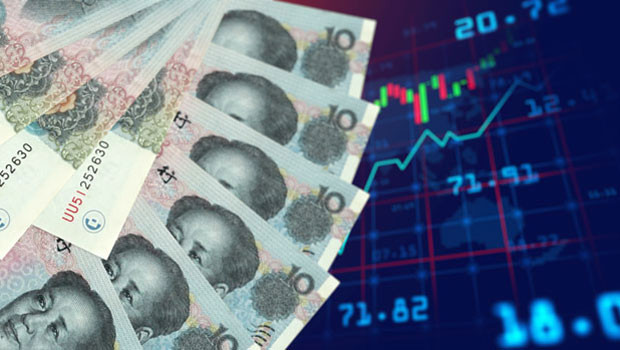Asia report: Stocks rise on solid data from China, Japan

Stock markets in the Asia-Pacific region closed higher on Friday, as banking concerns continued to fade and the technology sector received a boost on Wall Street overnight.
Investor attention was also focused on the release of PCE consumer inflation data in the US later in the global day, which is the Federal Reserve’s preferred measure of price rises.
“Asian equity markets were mostly trading in the green as investors marked up month- and quarter-end, following the positive flows from Wall Street,” said TickMill Group market analyst Patrick Munnelly.
“Tech once again led the bullish charge, with the Nasdaq teetering on the edge of bull market territory.”
Munnelly said markets were increasingly pricing rate cuts into the year-end, leading investors to allocate to growth stocks.
“The Nikkei notched up gains as the end of the fiscal year saw investors push the benchmark over the 28,000 level, while Chinese PMI’s printed a 12-year high, leading to outperformance in the Hang Seng.
“JD.com is planning to spin-off and separately list its industrials and property units, following Alibaba’s lead earlier in the week.”
Regional bourses a sea of green at month-end
In Japan, the benchmark Nikkei 225 index rose 0.93% to close at 28,041.48, while the broader Topix gained 1.02% to 2,003.50.
Mitsui was up by 7.61%, Kobe Steel rose by 4.15%, and Tokyo Seikan Group added 3.93%.
The Shanghai Composite in China gained 0.36% to 3,272.86, while the Shenzhen Component was up 0.64% to 11,726.40.
Guangshen Railway surged by 7.11%, and Hunan New Wellful rose by 6.83%.
In Hong Kong, the Hang Seng Index increased 0.45% to settle at 20,400.11, with Shenzhou International Group up by 6.6%, JD.com gaining 5.39%, and China Life Insurance rising 3.86%.
South Korea's Kospi gained 0.97% to 2,476.86, with Posco Holdings up 8.39% and Doosan Heavy Industries & Construction rising 3.98%.
In Australia, the S&P/ASX 200 index rose 0.76% to end the day at 7,177.80, with Gold Road Resources up 5.59% and Block Inc gaining 4.46%.]
New Zealand's S&P/NZX 50 index was the region’s odd one out, falling 0.41% to close at 11,884.50, with Eroad down 7.46% and Fletcher Building falling 3.75%.
In the currency markets, the yen was last 0.43% weaker against the dollar at JPY 133.27, while the Aussie was off 0.32% at AUD 1.4946, and the Kiwi retreated 0.04% against the greenback to change hands at NZD 1.5972.
On the commodities front, Brent crude futures were last up 0.38% on ICE at $79.57 per barrel, while the NYMEX quote for West Texas Intermediate gained 0.67% to $74.87.
Inflation slows in Japan, PMIs stay positive in China
In economic news, China's official manufacturing purchasing managers index (PMI) came in at 51.9 for March, according Beijing’s National Bureau of Statistics, slightly beating analysts' expectations of 51.5 but lower than February's print of 52.6.
While most components eased from February, output, new orders, and exports remained in expansion territory.
Meanwhile, the non-manufacturing PMI for March was 58.2, higher than February's reading of 56.3, mainly driven by rises in activity in the construction sector.
“The consumption recovery is led by services, while goods spending probably will pick up moderately,” said Duncan Wrigley, chief China economist at Pantheon Macroeconomics.
“Premier Li Qiang said that China will issue further consumption-support policies, but we think these are likely to be either structural and long-term or targeted and small-scale.
“As a result, the consumption recovery will likely remain moderate-paced.
Elsewhere, Tokyo’s consumer price index (CPI) excluding fresh food rose 3.2% in March, according to government data, showing a slowed pace of inflation since the recent peak of 4.3% in December.
The reading was broadly higher than the expected 3.1%, but lower than the previous month's 3.3% rise.
Tokyo's overall inflation was at 3.3%.
“The Bank of Japan probably will be moderately assured that its outlook for gradually slowing consumer inflation this year is coming to pass,” Pantheon’s Wrigley added.
“The chief factors are government subsidies bringing down energy prices and reduced import costs, as a result of a steadier yen since November and cooling international energy and commodity prices.”
Elsewhere in Japanese data, the nationwide jobs-to-applications ratio was in line with expectations at 1.34, while the unemployment rate was higher than anticipated at 2.6%.
In geopolitical news, Japan's trade ministry announced that it would place export controls on equipment used in chip manufacturing.
Although it did not mention China by name as a target of the measures, the move was seen as consistent with Washington’s push late last year to restrict Beijing’s ability to produce high-tech chips amid concerns that it could be used militarily.
Reporting by Josh White for Sharecast.com.